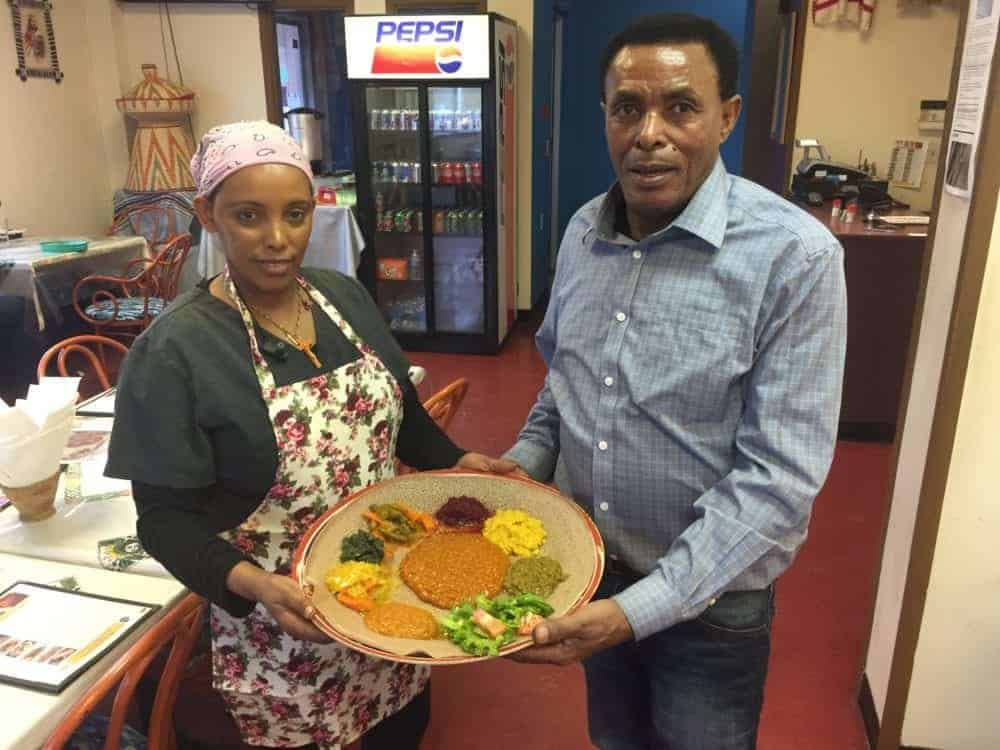Without injera, there is no Ethiopian meal.

Ezra Black/NNSL photo
The floppy, featherweight flatbread is as thin as a pancake and has a spongy texture. One side is smooth while the other is full of holes, which are produced when bubbles swell and pop as the batter settles on the griddle.
Injeria is a very important component of an Ethiopian meal. It is often both a staple food and a utensil.
Traditionally, a dinner guest eats their meal by tearing off pieces of injera to scoop up dishes such as collard greens, split peas or turmeric-infused salads.
At Zehabesha Traditional Ethiopian Restaurant, the injera is known to be delicious – it's homemade with teff and barley flour.
“If you want to see how to make injera … it is hard,” boasted co-owner Dinku Tadesse. “It's not frozen, our food. We start from scratch.”
Tadesse and his wife Eline Baye opened the downtown eatery on Nov. 6, 2014 and now they’re thanking the community for all its support.
On Nov. 6, there will be gifts and surprises during lunchtime as they celebrate four years in business.
“We have to appreciate our customers,” said Tadesse. “We are doing better than four years ago.
That's why we want to thank those who helped us.”
Tadesse and Baye arrived in Yellowknife in 2010 from Addis Ababa, the Ethiopian capital, via Winnipeg.
He was driving a taxi and she was working in a hotel when the pair decided to open their business in the former home of the Blue Star restaurant.
They were not complete strangers to the culinary scene. Baye’s family had owned a five-star restaurant back in Ethiopia and she herself was a master of injera and many other dishes.
“She is a professional. She's a hard worker and a good cook,” said Tadesse. “She knows very well our traditional food.”
Their venture got off to a shaky start.
Transporting the proper ingredients to the sub-Arctic is no easy feat and food prices are high in the North, said Tadesse.
“The restaurant business is very hard,” said Tadesse. “For almost a year we struggled. We didn't collect a salary. We almost had to give up because the rent is high and we didn't get enough customers to survive.”
But Tadesse and Baye have persisted and their modest eatery continues to bring a taste of East Africa to the North.